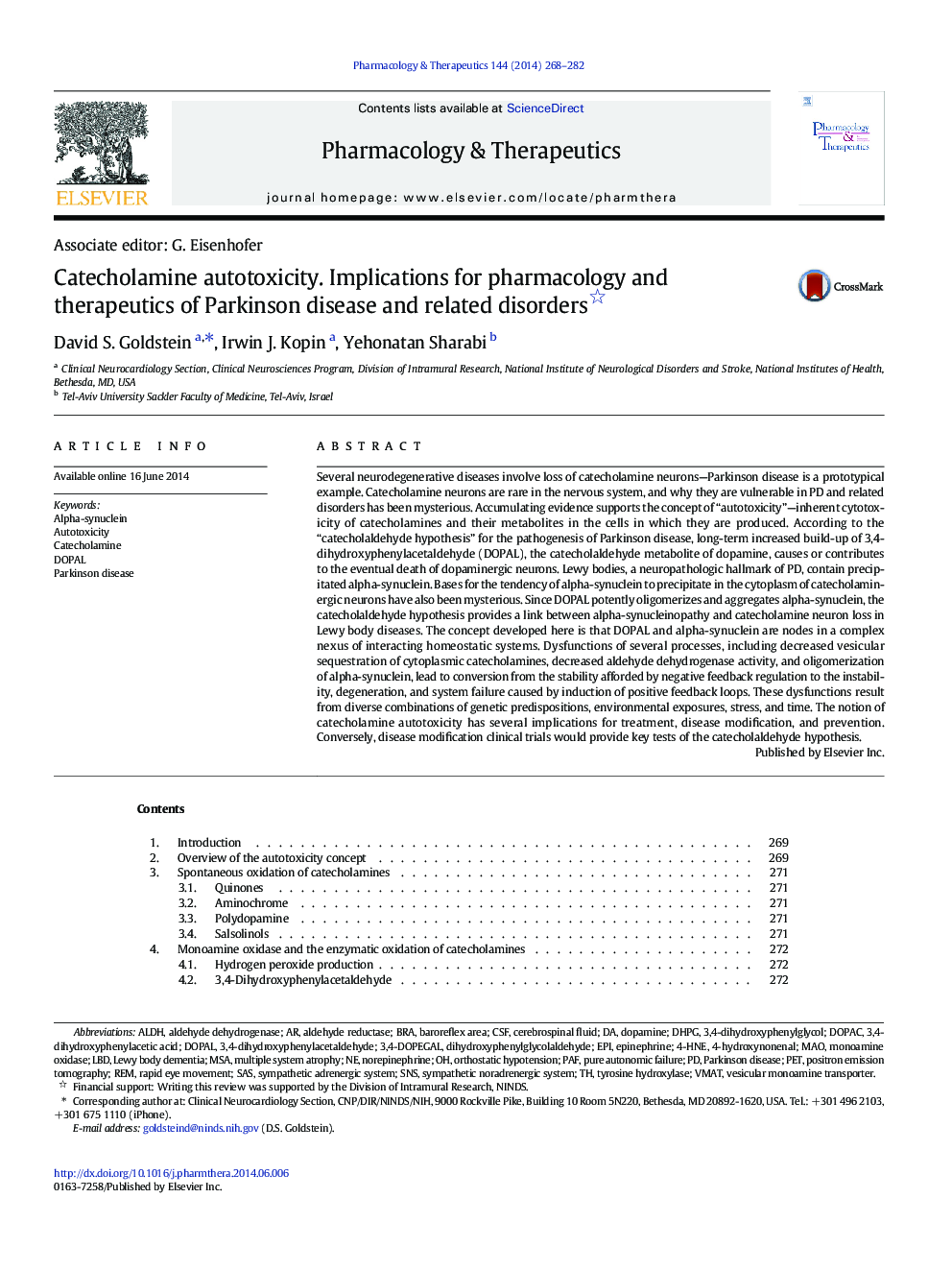| کد مقاله | کد نشریه | سال انتشار | مقاله انگلیسی | نسخه تمام متن |
|---|---|---|---|---|
| 2563708 | 1127556 | 2014 | 15 صفحه PDF | دانلود رایگان |
Several neurodegenerative diseases involve loss of catecholamine neurons—Parkinson disease is a prototypical example. Catecholamine neurons are rare in the nervous system, and why they are vulnerable in PD and related disorders has been mysterious. Accumulating evidence supports the concept of “autotoxicity”—inherent cytotoxicity of catecholamines and their metabolites in the cells in which they are produced. According to the “catecholaldehyde hypothesis” for the pathogenesis of Parkinson disease, long-term increased build-up of 3,4-dihydroxyphenylacetaldehyde (DOPAL), the catecholaldehyde metabolite of dopamine, causes or contributes to the eventual death of dopaminergic neurons. Lewy bodies, a neuropathologic hallmark of PD, contain precipitated alpha-synuclein. Bases for the tendency of alpha-synuclein to precipitate in the cytoplasm of catecholaminergic neurons have also been mysterious. Since DOPAL potently oligomerizes and aggregates alpha-synuclein, the catecholaldehyde hypothesis provides a link between alpha-synucleinopathy and catecholamine neuron loss in Lewy body diseases. The concept developed here is that DOPAL and alpha-synuclein are nodes in a complex nexus of interacting homeostatic systems. Dysfunctions of several processes, including decreased vesicular sequestration of cytoplasmic catecholamines, decreased aldehyde dehydrogenase activity, and oligomerization of alpha-synuclein, lead to conversion from the stability afforded by negative feedback regulation to the instability, degeneration, and system failure caused by induction of positive feedback loops. These dysfunctions result from diverse combinations of genetic predispositions, environmental exposures, stress, and time. The notion of catecholamine autotoxicity has several implications for treatment, disease modification, and prevention. Conversely, disease modification clinical trials would provide key tests of the catecholaldehyde hypothesis.
Journal: Pharmacology & Therapeutics - Volume 144, Issue 3, December 2014, Pages 268–282
